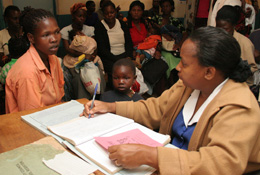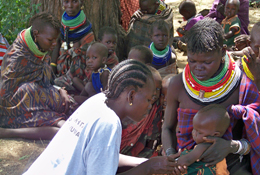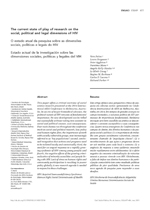Community-Based HIV and AIDS Prevention, Care, and Support
Begun in 1999, the same year the Kenyan government declared HIV and AIDS a national disaster, the COPHIA Project was based in five Kenyan provinces with high HIV prevalence. COPHIA (Swahili for hat and slang for condom) worked to prevent the spread of HIV and to provide care and support for people living with HIV and AIDS-including their families, orphans, and vulnerable children.
Major elements of the COPHIA model included:
- Training local leaders to promote community care of people infected with HIV and lead the effort to reduce stigma associated with the virus. Community mobilization also promoted prevention of the spread of HIV.
- Supporting family and community members, as well as community health workers and their supervisors, to provide care and support for people living with HIV and AIDS in their homes.
- Training community groups to identify and support children affected by HIV and AIDS, provide counseling, educational and vocational training, (e.g. school fees and uniforms), health care, and paralegal support.
- Building community-based support systems for individuals and families affected by HIV and AIDS through training in business skills, micro-credit activities, and community and child counseling; establishing local paralegal services that address inheritance issues and other legal matters that frequently inhibit families affected by HIV and AIDS; and facilitating small agricultural and food security initiatives.
COPHIA Activities
The home-based care and community support activities developed by COPHIA over its first seven years continued to be supported by new USAID-funded projects in each province. COPHIA focused on the renovation of health facilities in COPHIA project areas that served the same people living with HIV and AIDS who benefited from seven years of COPHIA support for home-based care and community support activities. The health facilities, located primarily in Nairobi and Mombasa, provided large, poor, urban populations with much-needed preventive and curative services. Others were in rural areas. Facilities were selected based upon infrastructural needs, population served, and linkages to community based programs and services.
Related Projects

APHIA II Nairobi and Central
PAST PROJECT: With support from the Government of Kenya, this project used an integrated model of AIDS, population, and health to expand access to quality, sustainable HIV and AIDS and TB prevention, treatment, and support and family planning services.

APHIAplus Nairobi-Coast
The APHIAplus (AIDS, Population and Health Integrated Assistance Plus) Nairobi-Coast program is a five-year flagship health services delivery program funded by USAID.

APHIAplus Northern Arid Lands
PAST PROJECT: This project improved health service delivery by strengthening access, quality, and integration of facility-level services, supporting community capacity building and building multi-sectoral collaboration.
RELATED NEWS

The Current State of Play of Research on the Social, Political and Legal Dimensions of HIV
This paper offers a critical overview of social science research presented at the 2014 International AIDS Conference in Melbourne, Australia.
HoPE for Sustainable Development: Results From an Integrated Approach in East Africa
Supported by Pathfinder International, the MacArthur Foundation, and the Packard Foundation, the Health of the People and Environment in the Lake Victoria Basin initiative, or HoPE-LVB, has employed the PHE model to address food insecurity, weak health infrastructure, environmental degradation, high maternal and infant mortality, and inadequate water, sanitation, and hygiene.



